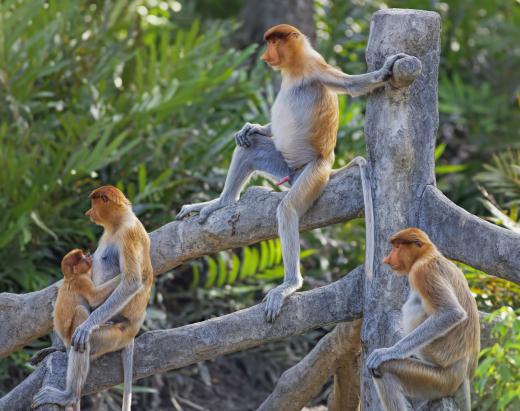What is Primatology?
Primatology is the scientific study of living non-human primates. Primates are our closest relatives among all living things. Monkeys, gibbons, greater apes and humans are all primates. Primatology exists because humans have a unique place within primates. Primatology gives us a greater understanding of biological nature.
Unlike traditional academic methods, primatology is defined more by the object of study, that of primates, rather than by the specific subject matter it addresses. Primatology helps humans gain a better understanding of our own characteristics. We owe these characteristics to our primate ancestry, and this enables us to determine what makes us human. It also helps us understand what makes us tick, both biologically and behaviorally.

Humans did not exactly evolve from apes. We do share a common ancestor, dating to about six million years ago. Modern apes and other primates have evolved since that time, as well as the humans. Primatology takes into account the necessity not to take studies of modern primates as literal readings of our ancient past.
Primates are one of the most diverse groups of mammals. They vary enormously in size. They can be the tiniest of the mouse lemurs, at just 24-38 grams (.85-1.3 oz), to the huge adult male gorilla, which can weigh in at 200 kg (440 lb).
Primate characteristics include a tendency towards upper body erectness while standing, sitting and walking. Their hands also have five digits, and most have opposable thumbs. Primates also have nails instead of claws.

Another characteristic of primates is that the eyes are set in the front of the face. They also have a strong dependence on learned behavior and a reduced number of offspring. In primates, there is also a shift away from the sense of smell towards the sense of vision and the use of tactile organs such as hands.
Psychobiologist Robert Yerkes was an early primatology expert. In the 1930s, he ran the Yerkes Regional Primate Center in Atlanta. He had the largest collection of apes in the country. His primatology tests included social behavior, stress, IQ testing and physiology.

A very well known primatology expert is Dianne Fossey. In 1967, she studied mountain gorillas in Rwanda. It is thought that Fossey was killed trying to protect her gorillas from hunters. Gorillas in the Mist is a film about Fossey's life starring Sigourney Weaver, and it is an excellent starting point for anyone interested in the study of primates.
AS FEATURED ON:
AS FEATURED ON:














Discussion Comments
I'm so glad this article makes it clear that people didn't "evolve from monkeys." There is so much ignorance about evolution out there, most of it coming from people who are just plain uncomfortable with the idea, so they find any reason to tear it down.
People say things like, "How can people have evolved from monkeys if there are still monkeys?" Then you have to start this whole painstaking explanation about common ancestors, we didn't evolve from modern monkeys, etc.
@anon25349 - I'm not sure if women are indeed extra-represented in primatology, but I have heard that women seem more drawn to life sciences in general than to chemistry, physics, etc. It could be something about women's own interests or it could be that they find careers in primatology and other life sciences to be more welcoming (i.e., more family-friendly).
Why women have an unusually high representation and disability in primatology?
Post your comments